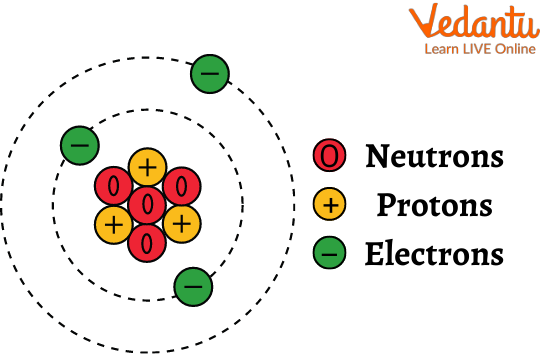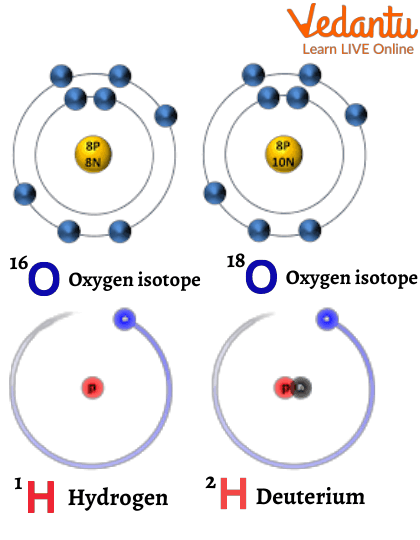




Why Understanding Isotopes Matters in Environmental Science
Whenever we see the world around us, there is always something present. Everything in this world is made up of atoms. And they are further divided. Just a minute: Confused? Don't worry, we know that it sounds a little tricky but in this article all your doubts will be cleared about the type of atom that is isotopes in a very fun and easy way.
So, today in this article, we are going to discuss isotopes. We will learn what are isotopes, their examples, and uses of isotopes. So now, let's get started.

Isotopes
What are Isotopes?
We know that every element is distinguished by the number of electrons, protons and neutrons that they possess. So we can say that each element has its own unique atoms which have a specific number of protons present in it and the number of protons decides the atomic number of the elements.
Each atom has the same number of electrons as protons, but in the case of isotopes they are a little bit different; they have the same number of electrons and protons but different numbers of neutrons. But isotopes have the same atomic number and also the same position in the periodic table but they have different atomic masses.
Remember one thing, changing the number of neutrons in an atom does not change its element.
So we can say that isotopes are two or more forms of a chemical element which have different chemical properties but the same physical properties.
We should know that every chemical element has isotopes but they can have one or more isotopes. Moreover, they have almost the same chemical properties but they vary in mass.
There are two types of isotopes:

Isotopes of Hydrogen and Oxygen
Stable Isotopes
These types of isotopes will decay over time and will turn into another isotope or another element. Most elements which are found in nature are made of stable isotopes.
Unstable Isotopes
They emit radiation and are also called radioisotopes. When radioisotopes undergo radioactive decay, the initial isotope is called the parent isotope and the atoms produced by the reaction are called daughter isotopes.
The technique used to measure the number and proportion of isotopes in matter and trace their origin history and source of origin is called nuclear technology.
With these measurements, the experts understand what volume of certain vitamins are absorbed by the body, and the number of fertiliser plants take up and many more.
Example of Isotopes
Carbon 12
Carbon 14
Uranium 235
Uranium 238
Deuterium
Uses of Isotopes
The uses of isotopes are as follows:
Carbon 14 is an isotope of carbon which is used in carbon dating. The amount of carbon present in the fossils helps in calculating the age of fossils.
The isotopes of Uranium such as U-235 are used as a fossil fuel in nuclear reactors.
Radioactive isotopes are generally used for medicinal purposes, for example, for detecting cancerous cells.
Iodine is an isotope of carbon which is used in the treatment of goitre.
Facts About Isotopes
The facts about isotopes are as follows:
Hydrogen is the only element whose isotopes are given a unique name.
Hydrogen is the element which has the fewest number of isotopes.
Cesium and xenon are the elements which have the highest number of isotopes.
All man-made elements are radioactive isotopes.
The reaction of the isotopes of the same element also differs as heavier isotopes of the same element react more slowly than lighter isotopes of the same element.
Twenty-six elements are there which have only one stable isotope and they are called monoisotopic.
Isotopes of iodine are used to treat goitre disease and isotopes of iodine are also used to locate tumours of the brain and liver.
Cobalt 60 is the radioactive isotope used in treatment of cancer.
Summary
So in this article, we learnt about isotopes in an interesting way. Now we can understand that isotopes are not nearly as scary as we had first imagined. It's actually one of the most interesting topics, isn't it? We learnt in this article what are Isotopes, what are the examples of Isotopes, and what are more than 5 uses of Isotopes in daily life. We also discussed the amazing fun facts about Isotopes. We discussed facts like the isotope of iodine is used to treat the disease called goitre, and Cobalt 60 is an isotope which is used in the treatment of cancer. We hope you enjoyed reading this article.
FAQs on Isotopes: Definition, Types, and Uses
1. What are isotopes?
Isotopes are different forms of a single chemical element. They are atoms that have the same number of protons (and thus the same atomic number) but a different number of neutrons in their nuclei. Because they have the same number of protons, isotopes of an element occupy the same position on the periodic table but have different mass numbers.
2. How are different isotopes of an element represented?
Isotopes are typically represented in two ways. Firstly, by using the element's name followed by its mass number, such as Carbon-14 or Uranium-235. Secondly, using the standard atomic notation AZX, where 'A' is the mass number (protons + neutrons), 'Z' is the atomic number (protons), and 'X' is the element symbol. For example, the isotopes of carbon are written as 126C and 146C.
3. What are the main types of isotopes based on their stability?
Isotopes are broadly classified into two main types based on their nuclear stability:
- Stable Isotopes: These have a stable combination of protons and neutrons in their nucleus and do not undergo radioactive decay. For example, Carbon-12 is a stable isotope of carbon.
- Unstable Isotopes (Radioisotopes): These have an unstable nucleus and undergo spontaneous radioactive decay to become more stable, emitting radiation in the process. For instance, Carbon-14 is an unstable or radioactive isotope of carbon.
4. What are some important examples of isotopes and their uses in daily life?
Many isotopes have crucial applications in medicine, industry, and research. Here are a few key examples:
- Carbon-14: A radioisotope used in carbon dating to determine the age of ancient fossils and archaeological artefacts.
- Cobalt-60: Used in radiotherapy to destroy cancerous tumours and to sterilise medical equipment.
- Iodine-131: A medical isotope used to diagnose and treat thyroid disorders, including goitre and thyroid cancer.
- Uranium-235: A fissile isotope used as fuel in nuclear power plants to generate electricity and in the production of nuclear weapons.
5. Why do isotopes of the same element share the same chemical properties?
The chemical properties of an atom are almost entirely determined by its electron configuration, specifically the number of valence electrons. Since all isotopes of an element have the same number of protons, a neutral atom will also have the same number of electrons. This identical electronic structure means they react chemically in the same way. The difference in the number of neutrons primarily affects the atom's mass and nuclear stability, which are physical properties, not chemical ones.
6. What is the difference between isotopes and isobars?
Isotopes and isobars are often confused but describe different atomic relationships. Isotopes are atoms of the same element that have the same atomic number (number of protons) but different mass numbers (due to different numbers of neutrons). For example, Protium (¹H), Deuterium (²H), and Tritium (³H) are isotopes of hydrogen. In contrast, isobars are atoms of different elements that share the same mass number but have different atomic numbers. For example, Argon-40 (¹⁸Ar) and Calcium-40 (²⁰Ca) are isobars.
7. Are all isotopes radioactive? Explain with an example.
No, not all isotopes are radioactive. Most elements have a mix of both stable and radioactive isotopes. A stable isotope has a nucleus that does not decay over time, while a radioactive isotope (radioisotope) has an unstable nucleus that does. For example, the element carbon has two primary isotopes: Carbon-12, which is stable and makes up about 99% of all carbon, and Carbon-14, which is radioactive and far less abundant.
8. How does the existence of isotopes explain why many elements have a fractional atomic mass on the periodic table?
The atomic mass shown on the periodic table is not the mass of a single atom. Instead, it is a weighted average of the masses of all naturally occurring isotopes of that element. This average is calculated based on the mass of each isotope and its relative natural abundance. For example, chlorine has two main isotopes: Chlorine-35 (≈75% abundance) and Chlorine-37 (≈25% abundance). The weighted average of these masses gives chlorine an atomic mass of approximately 35.5 amu, which is not a whole number.









